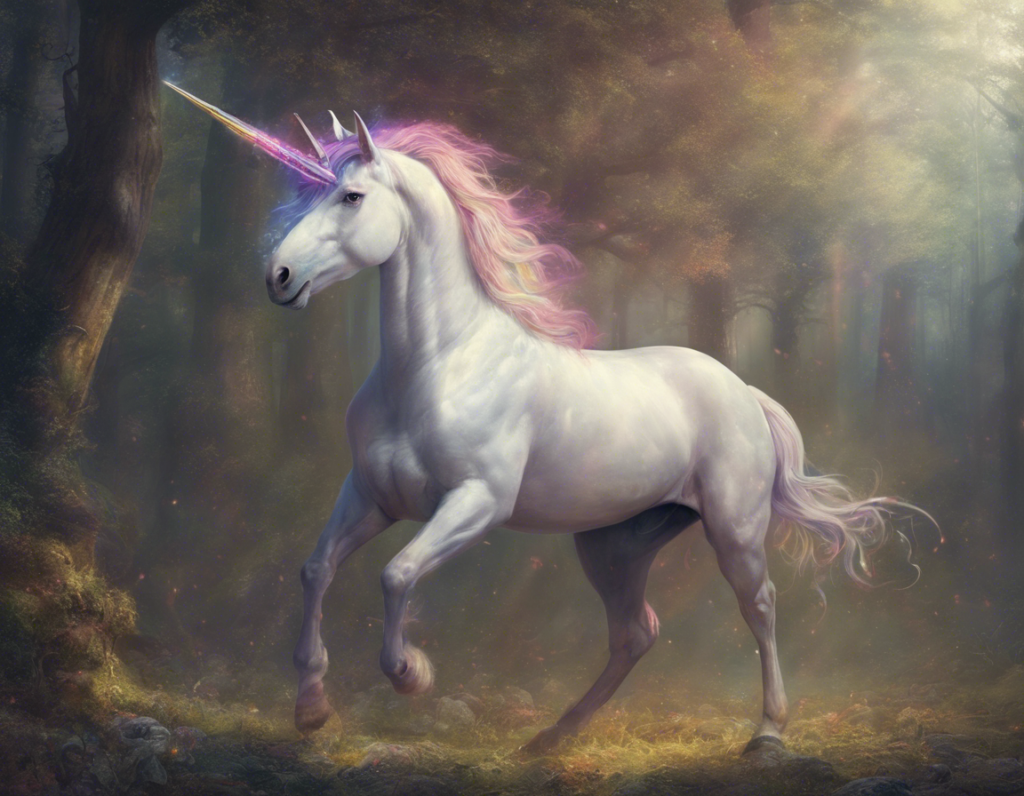Over the ages, unicorns have captivated our imaginations with their majestic and mythical presence. The single-horned creature has been a staple in folklore, literature, and popular culture for centuries, symbolizing purity, grace, and magic. However, there arises a fascinating debate when we pit one unicorn against another – a clash of titans, if you will. Welcome to the battle of the “Unicorn vs. Unicorn”.
The Unicorns: A Brief Introduction
Before delving into the heated debate, let’s take a moment to understand the essence of these mystical creatures. Unicorns are typically depicted as horse-like beings with a single spiraling horn protruding from their foreheads. They are often associated with virtues such as innocence, healing, and beauty.
Unicorn of the West vs. Unicorn of the East
Origins:
The Western unicorn is commonly portrayed in European folklore as a symbol of purity and grace, often depicted in white with a flowing mane. In contrast, the Eastern unicorn, known as the Qilin in Chinese mythology, has a more dragon-like appearance with features like the scales of a fish and the tail of an ox.
Powers and Abilities:
While both unicorns are associated with bringing good luck, the Western unicorn is often portrayed as having the power to heal sickness and purify water, whereas the Eastern unicorn is believed to have the ability to detect lies and evil intentions.
Cultural Significance:
The Western unicorn has been a symbol of heraldry and royalty in Europe, adorning coats of arms and flags. On the other hand, the Qilin holds a significant place in Chinese culture as a harbinger of prosperity and good fortune.
The Debate: Who Would Win?
Now, let’s shift our focus to the central question – If a Western unicorn and an Eastern unicorn were to engage in a mythical showdown, who would emerge victorious?
Physical Attributes:
- The Western unicorn is known for its speed and agility, with a horn that is said to possess healing properties. Its ethereal beauty and grace could serve as an advantage in battle.
- The Eastern unicorn or Qilin, on the other hand, is often depicted as a powerful and noble creature with the ability to breathe fire. Its dragon-like features and formidable stature could make it a formidable opponent.
Magical Abilities:
- The healing powers of the Western unicorn could provide it with resilience in battle, allowing it to recover from wounds swiftly.
- The Qilin‘s ability to detect deception and evil intentions could give it an edge in anticipating attacks and outmaneuvering its opponent.
Combat Strategy:
- The Western unicorn, known for its gentle nature, may rely on evasive maneuvers and strategic use of its horn to incapacitate its foe.
- The Qilin, being a creature associated with justice and righteousness, might employ a more direct approach, using its fiery breath and strength to overpower its adversary.
Conclusion
In the end, the outcome of this mythical battle remains shrouded in mystery and speculation. Both unicorns, with their unique strengths and abilities, have the potential to emerge victorious depending on the circumstances of the encounter. Perhaps it is the essence of their mythical nature that transcends the confines of a mere competition, reminding us of the enduring allure and magic of these enchanting creatures. Unicorns, whether Western or Eastern, will forever hold a special place in our hearts and imaginations as symbols of wonder and transcendence.
FAQs (Frequently Asked Questions)
- Are unicorns real creatures?
-
Unicorns are mythical creatures that have been a part of folklore and mythology. There is no scientific evidence to prove their existence.
-
What does the horn of a unicorn symbolize?
-
The horn of a unicorn is often associated with purity, healing, and magical abilities in various cultures.
-
Why are unicorns often depicted as white horses?
-
The white color of unicorns symbolizes purity, innocence, and goodness in Western folklore.
-
Can unicorns fly?
-
While some depictions show unicorns with wings, the traditional portrayal of unicorns does not include the ability to fly.
-
Do unicorns only appear in European and Chinese mythology?
-
Unicorns have appeared in various mythologies and folklore around the world, each with their own unique interpretations and characteristics.
-
Are unicorns male or female?
-
In some lore, unicorns are depicted as male, while in others, they are seen as genderless or able to change gender.
-
What powers do unicorns possess?
-
Unicorns are often associated with abilities such as healing, purifying water, detecting lies, and bringing good luck.
-
Can unicorns be tamed by humans?
-
In folklore, unicorns are often seen as elusive creatures that cannot be easily tamed or captured by humans.
-
Are there any real animals similar to unicorns?
-
Some animals, like the rhinoceros, have been speculated as possible inspirations for unicorn myths due to their horned appearance.
-
Why are unicorns considered symbols of magic and fantasy?
- The ethereal and mysterious nature of unicorns, combined with their associations with purity and grace, have cemented their status as symbols of magic and fantasy in human culture.
